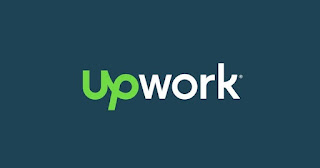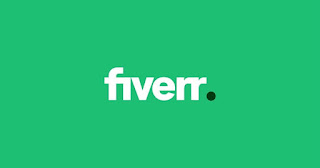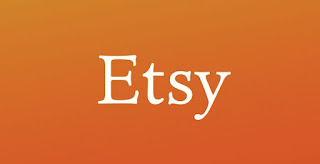Top Free Tools to Make Money Online in 2025
1. Freelancing Tools
Freelancing is a flexible way to earn by offering skills like writing, design, or coding. These free platforms connect you with clients:
• Upwork (Free Basic Plan)
Tip: Use Upwork’s free skill tests to earn badges and boost credibility.
• Fiverr (Free to Join)
Tip: Use Fiverr’s free analytics to track which gigs perform best and refine them.
• Canva (Free Version)
Canva’s free graphic design tool is perfect for freelancers offering visual content. Create logos, social media posts, or presentations without design experience. Pair Canva with Fiverr or Upwork to deliver professional work fast.
Tip: Use Canva’s free templates to save time and customize them for clients.
2. Content Creation Tools
• Blogger (Free Blogging Platform)
Tip: Use Google Keyword Planner (free) to find high-traffic, low-competition keywords.
• YouTube (Free to Join)
YouTube remains a powerhouse for video content. Upload tutorials, vlogs, or reviews to earn via ads (once you hit 1,000 subscribers and 4,000 watch hours). Use free editing tools like DaVinci Resolve to polish videos.
Tip: Post consistently and optimize titles/thumbnails with tools like TubeBuddy’s free browser extension.
• CapCut (Free Video Editing)
CapCut’s free version offers robust editing for TikTok, YouTube Shorts, or Instagram Reels. Create engaging short-form content to build a following and monetize through brand deals or affiliate links.
Tip: Use trending audio from CapCut’s library to boost discoverability.
3. E-Commerce and Selling Tools
Selling products or services online doesn’t require a big budget. These tools help you set up shop for free:
• Gumroad (Free Plan)
Gumroad lets you sell digital products like eBooks, courses, or art with no upfront cost (though it charges 10% + fees per sale). Create products using free tools like Google Docs or Canva, then promote via social media.
Tip: Offer a low-cost product ($5-$10) to attract first-time buyers.
• Etsy (Free to Join, Listing Fees Apply)
Etsy’s free account lets you sell handmade or vintage items. While listings cost $0.20 each, you can start small with digital downloads (e.g., printable planners) created on Canva.
Tip: Research trending items using Etsy’s free search bar analytics to spot demand.
• Facebook Marketplace (Free)
Sell physical items locally or ship nationally with no platform fees. Take clear photos and write detailed descriptions to attract buyers. Use this alongside e-commerce platforms to diversify.
Tip: Join local buy/sell groups on Facebook to expand your reach.
4. Affiliate Marketing Tools
• Amazon Associates (Free to Join)
Amazon’s affiliate program pays up to 10% commissions for referred sales. Share links on blogs, YouTube, or social media. Use free tools like Bitly to shorten and track link performance.
Tip: Focus on high-demand, low-competition products like tech gadgets.
• ShareASale (Free to Join)
ShareASale connects you with thousands of merchants across niches. Create content around their products (e.g., fitness gear reviews) and embed affiliate links. Use free social media schedulers like Buffer to promote consistently.
Tip: Check ShareASale’s free merchant performance reports to pick high-converting programs.
• Google Sites (Free Website Builder)
Build a simple affiliate site with Google Sites to host reviews or guides. It’s beginner-friendly and integrates with AdSense or affiliate links.
Tip: Optimize for SEO using free tools like Ubersuggest to drive organic traffic.
5. Online Tutoring and Coaching Tools
If you’re knowledgeable in a subject, teach others online using these free platforms:
• Italki (Free for Community Tutors)
Italki lets you teach languages as a community tutor with no certification required. Set your rates and schedule. Use Zoom’s free plan for sessions.
• Clarity.fm (Free to Join)
Clarity connects experts with clients seeking advice (e.g., business or marketing). You set your per-minute rate, and the platform is free to use (though it takes a commission).
Tip: Niche down (e.g., “e-commerce growth strategies”) to attract targeted clients.
• Google Meet (Free)
Tip: Record sessions (with permission) to create paid content later.
6. Survey and Microtask Tools
• Swagbucks (Free)
Swagbucks pays for surveys, watching videos, or shopping online. Redeem points for cash or gift cards. Expect $1-$5 per hour, but it’s low-effort.
Tip: Focus on high-paying surveys and use a dedicated email to avoid spam.
• Amazon Mechanical Turk (Free)
MTurk offers microtasks like data entry or image tagging, paying $0.01-$1 per task. While earnings are modest, tasks are quick.Tip: Use browser extensions like MTurk Suite (free) to find better-paying tasks.
• UserTesting (Free to Join)
Earn $10 per 20-minute website test by sharing feedback. You need a computer or phone and a quiet space. Tests are sporadic but stackable.
Tip: Complete your profile fully to qualify for more tests.
Tips for Success
• Start Small: Focus on one tool or platform to avoid overwhelm. For example, try Fiverr for freelancing or YouTube for content.
• Invest Time: Free tools require effort to yield results. Dedicate consistent hours weekly.
• Upskill: Use free resources like Coursera’s audit mode or YouTube tutorials to learn high-demand skills (e.g., SEO, video editing).
• Diversify: Combine multiple streams (e.g., affiliate links on a blog and freelancing) to maximize income.
• Track Progress: Use free tools like Google Sheets to monitor earnings and set goals.
Final Thoughts
Making money online in 2025 is accessible with free tools, but success hinges on strategy and persistence. Whether you’re freelancing on Upwork, selling on Gumroad, or building a YouTube channel, start with one platform, refine your approach, and scale over time. The internet’s opportunities are vast—pick a tool, dive in, and turn your skills into income.
Note: Always verify platform terms, as fees or policies may change. For the latest insights, check X posts or web searches on specific tools.
























Comments
Post a Comment